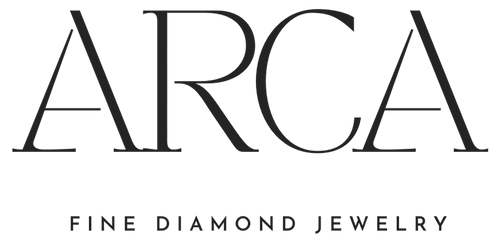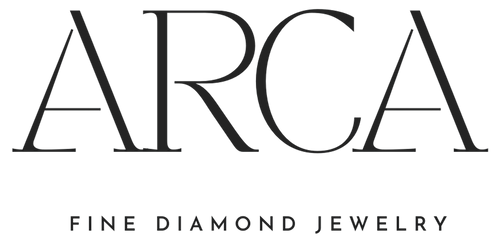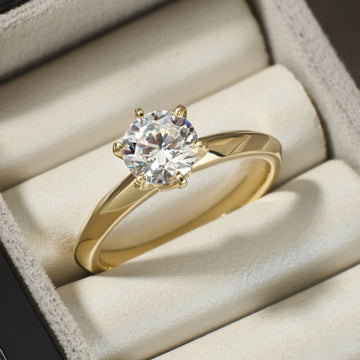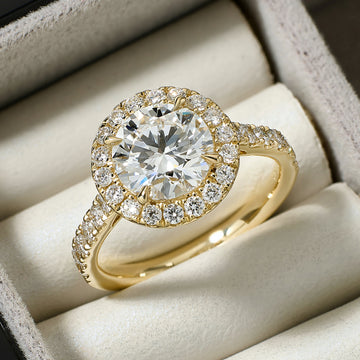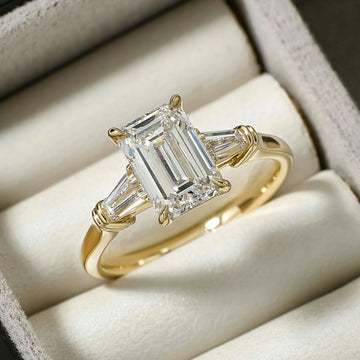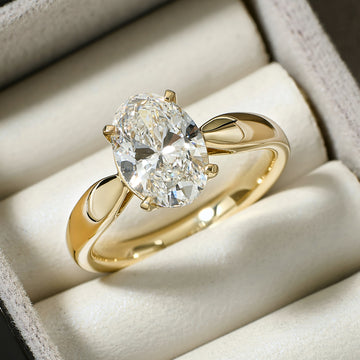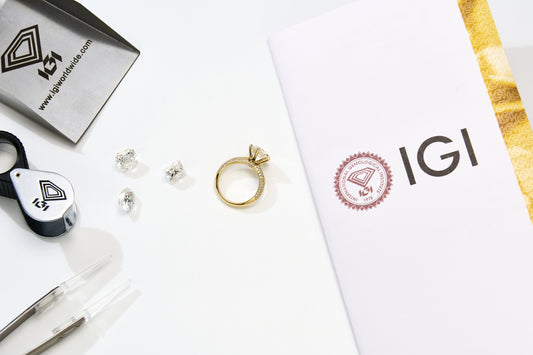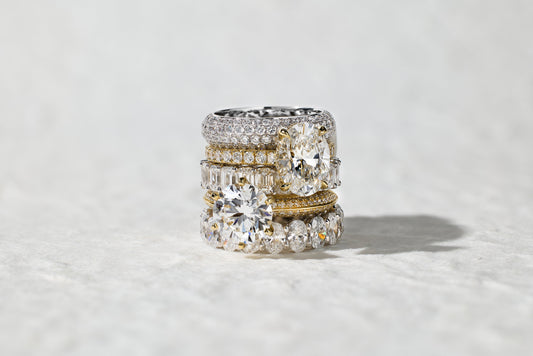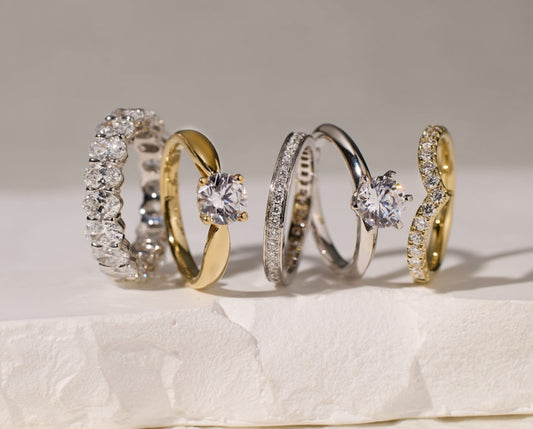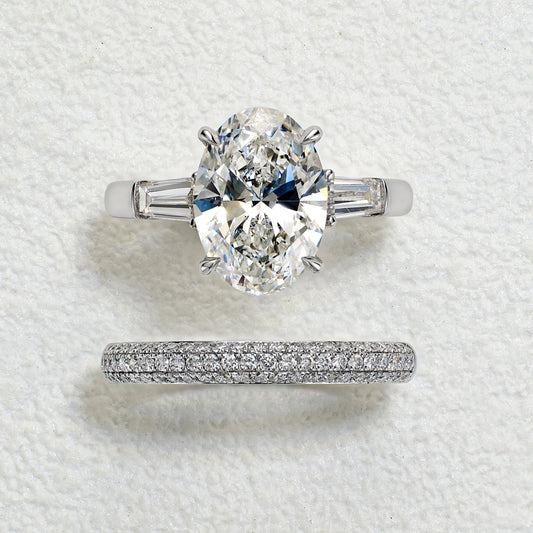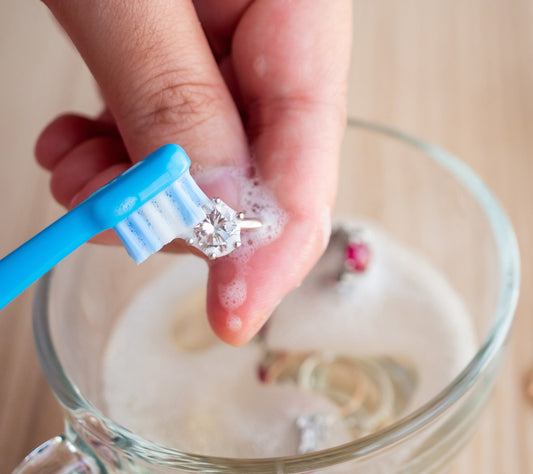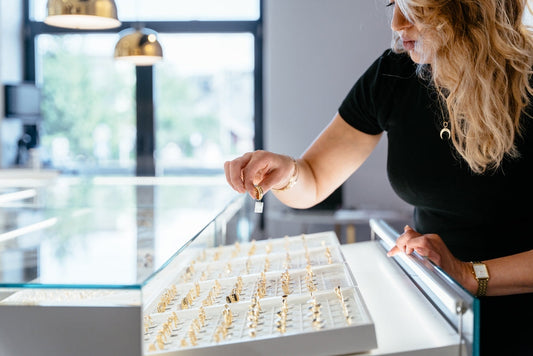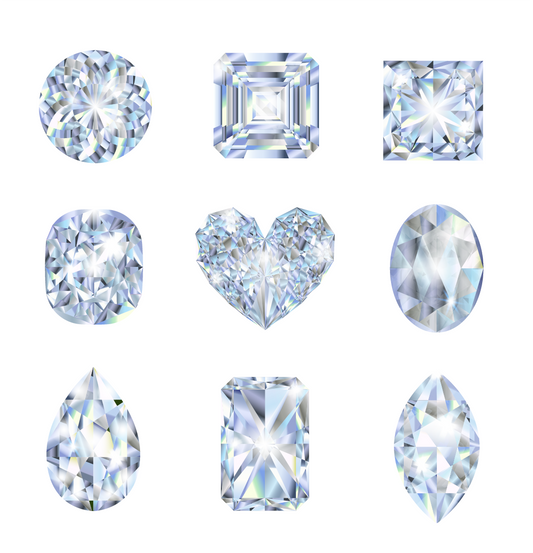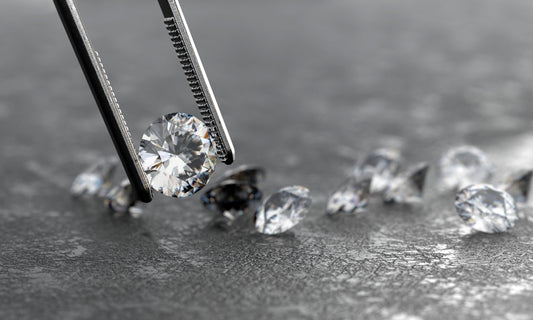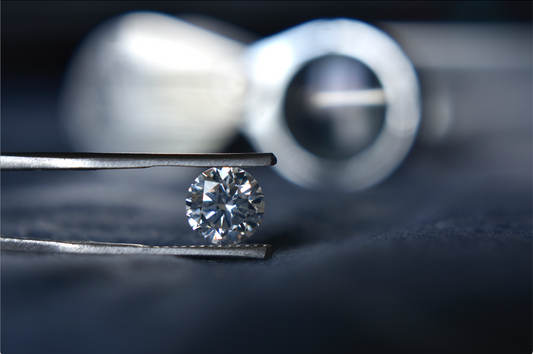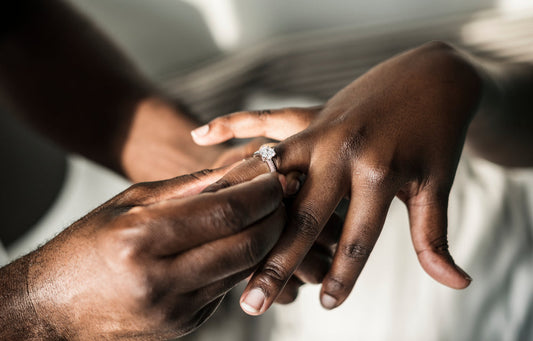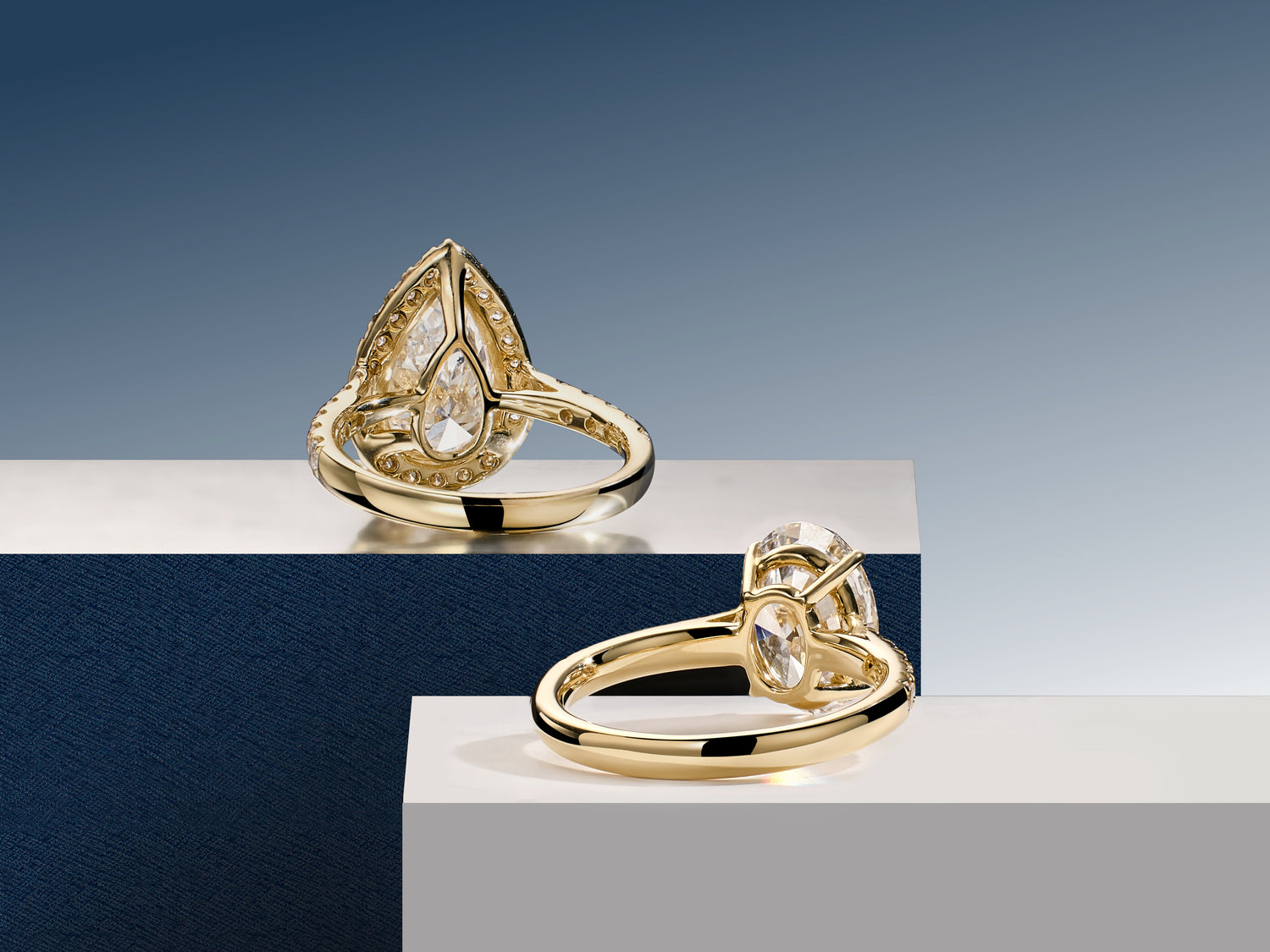
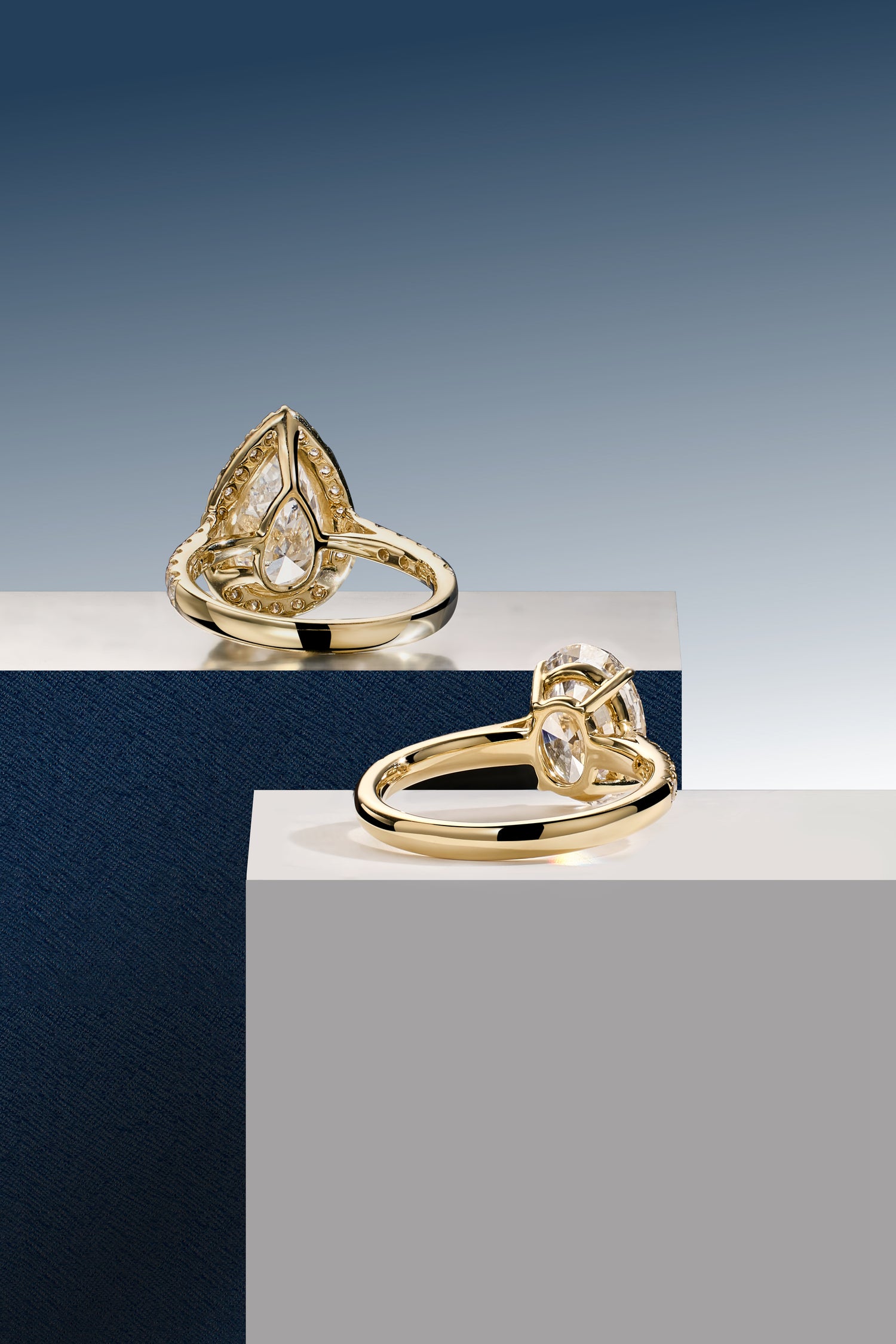
Blogs
TrueSpark™: The ARCA Diamond Standard
At ARCA, we believe that only the finest diamonds deserve to become part of your story. Our in-house experts have created the TrueSpark™ selection process, a set of requirements even stricter than those of major grading labs like IGI.
Our process begins with the basics: each diamond must have a IGI certificate and meet the highest grades in the 4Cs—cut, color, clarity, and carat. But this is just the first step.
Next, we look closely at the diamond’s cut parameters. Details like table percentage, crown angle, pavilion angle, girdle thickness, and culet size are carefully checked to ensure every diamond falls within the ideal range, which guarantees the stone’s proportions are perfect for brilliance and beauty.
After that, we use advanced tools like ASET and IdealScope to test each diamond’s light performance. Only diamonds that show outstanding brilliance and fire, reflecting and dispersing light beautifully, are selected to move forward.
The fourth step is a detailed clarity check. Using a 10x loupe or microscope, we examine the location of any inclusions or flaws. We select only those diamonds whose imperfections are hidden at the edge or bottom, away from the visible center.
Finally, we compare several diamonds with similar grades under different lighting—natural daylight, incandescent, and fluorescent. We choose the diamond with the most vivid fire, the brightest table, and the best symmetry.
After this careful five-step selection, just l the finest diamonds are worthy of the TrueSpark™ standard. When you choose ARCA, you know you’re getting a diamond that truly stands out for its quality, beauty, and brilliance.
Why Four Collections Make ARCA Different
At ARCA, we believe that less is truly more. Our carefully curated collection is designed to be both timeless and meaningful, with each ring enduring through the years in style and emotion.
Timeless Design
Each of our four collections is crafted with classic design as its core. We focus on enduring profiles and refined lines, ensuring that every ARCA ring can carry the weight of memories and emotions through every chapter of your life. With our rings, you’re not just choosing a piece of jewelry, you’re holding a memory that lasts a lifetime.
Attention to detail
Having fewer designs allows us to dedicate more attention to every single detail. Each ring undergoes rigorous inspection and hand-finishing, ensuring that the quality and craftsmanship are never compromised. With only four carefully selected styles, we can maintain exceptionally high standards and deliver the best possible experience to you.
An Effortless Choice, Focused on Love
We know that shopping for an engagement ring can be overwhelming. With endless choices, it’s easy to feel lost or uncertain. That’s why we keep our selection simple and intentional. By offering just four classic designs, we help you avoid decision fatigue and free up your energy for what truly matters: your love story and the next chapter you’ll create together.
At ARCA, we believe that love is best celebrated with simplicity, quality, and intention. Our carefully curated collection lets you focus on what’s important: the promise you’re making, and the memories you’ll create together.
Blogs
Lab-Grown vs. Natural Diamonds: Same Brilliance, Smarter Value
Scientifically, lab-grown and natural diamonds are “identical in essence.” From a buying experience perspective, lab-grown lets you achieve the same radiance with a friendlier budget and greater supply-chain transparency. As a brand dedicated to lab-grown diamonds, we channel more of your budget into visible sparkle, reliable craftsmanship, and responsible choices—so your ring honors your commitment and aligns with your values for the future. If you’d like tailored recommendations, share your budget, style, and hand profile; we’ll propose configurations you can order with confidence.
How to Accurately Measure Your Ring Size: A Complete Guide Worth Saving
Choosing the right ring size is the first step to a comfortable, secure fit—snug enough to stay on, never so tight it leaves marks. Many shoppers worry about sizing when ordering online. That’s why we provide a metal ring sizer and a simple instruction card to help you achieve professional results at home. You can request a free ringsizer without purchasing.
Meet Our Free Ringsizer and Instruction Card
Metal ring sizer: a bundle of hollow metal gauges arranged from small to large, using standard US sizes with half-size increments. The metal weight and thickness closely mimic a real ring for more accurate try-on feel.
Instruction card essentials:
Choose a ring close to your size.
Slide it onto the finger you’ll wear it on.
Find the snug fit that still goes over the knuckle.
Check comfort in the morning and evening.Tip: small dashes indicate half sizes. Quick check: make sure you’re reading “6,” not “9.”
Pro-Level Steps to Measure at Home
Choose the finger and real-life scenario
Sizes differ between fingers and between hands. Measure the hand you’ll wear it on. If one hand tends to swell, measure that hand.
Bring your hands to “everyday” condition
Avoid measuring right after exercise or big temperature swings. Wash with warm water or gently move your hands for 1–2 minutes before starting.
Find a starting point
If unsure, begin near the middle of the typical range: US 6–7 for many women, US 9–10 for many men. Adjust up or down based on feel.
Knuckle test
Slide the gauge over the fingertip and pass the widest part of the knuckle smoothly. The correct size should have slight resistance over the knuckle; at the base it should rotate gently without feeling loose.
Wiggle and rotation test
At the base of the finger, wiggle side to side and rotate 360°. Deep marks or difficulty rotating = too small. Risk of slipping off with a flick = too big.
AM–PM check
Try once in the morning and once in the evening. If the results differ, choose the larger half size for all-day comfort.
Record the size correctly
Our gauge uses US sizes; short ticks indicate half sizes. Double-check orientation so you don’t read 6 as 9.
Factors That Can Shift You by Half to a Full Size
Band width: wider bands (≥5 mm) feel tighter at the same inner diameter—go up half a size; extra-wide (≥8 mm) may need half to a full size up.
Inner profile: comfort-fit interiors slide over the knuckle more easily and feel a touch roomier. Consider this together with band width.
Temperature and physiology: fingers are fuller in summer and evenings, slimmer in winter and mornings. Size for the time you’ll wear the ring most.
Knuckle-to-base difference: if your knuckle is much larger than your finger base, choose a size that just gets over the knuckle but doesn’t spin at the base. Anti-slip beads or liners can fine-tune fit if needed.
No Ringsizer Yet? Temporary Methods (Confirm later with our ringsizer)
Compare a ring you already wear: measure its inner diameter in millimeters and convert to US size. Roughly, about 0.4 mm in diameter equals half a US size.
Paper/cord method: wrap a non-stretch paper strip around the finger base, mark, and measure the length to get circumference in millimeters, then convert to US size. Don’t pull too tight—allow ease to pass over the knuckle.Note: These methods have higher error. Use the metal ringsizer for your final decision.
FAQs
Should I choose tighter or looser? Aim for “comfortably snug”: passes the knuckle with mild resistance; at the base it doesn’t pinch and won’t fall off.
Two sizes both seem okay—how to decide? Usually pick the larger half size, especially for wide bands or summer wear. For thin bands or winter, you can lean toward the smaller half size.
Sizing for a surprise gift? Measure the inner diameter of a ring they already wear on the same finger, or discreetly use the paper method—then confirm with our ringsizer when possible.
Pre-Order Checklist
I’ve tried the metal ringsizer on the target finger and can get it over the knuckle.
I tested both morning and evening and the result is consistent.
I accounted for band width and inner profile.
I recorded the correct US size and half size.
If it’s a gift, I’ve considered their season and wearing habits.
How to Clean Your Ring: Simple Tips for Lasting Shine
Everyday activities can leave your ring covered in oil, dirt, and dust, which may reduce its sparkle and hide the diamond’s brilliance, which also harm the plating or delicate surfaces of your ring. Regular cleaning protects your diamond’s shine and helps prolong the life of both the stone and the ring.
How to Clean Your Ring at Home
Cleaning your ring at home is simple and doesn’t require any special tools. Start by soaking your ring in a bowl of warm water. Add a small amount of mild dish soap, body wash, or a jewelry cleaner—but avoid any moisturizing products, as they can leave a coating on your ring.
After soaking for about 15-20 minutes, gently scrub the ring with a clean, soft-bristled toothbrush to remove any remaining dirt. Pay special attention to the underside of the stone, where grime can build up. When you’re done, rinse the ring with clean water and let it dry naturally on a paper towel or soft cloth.
Other Tips and Precautions
For best results, clean your ring every one to two weeks. Avoid using harsh chemicals like bleach, alcohol, toothpaste, or ammonia, as these can corrode the plating or damage the stones. If your ring is plated, be especially gentle—excessive scrubbing can wear away the surface layer.
With these simple steps, your ring will keep its sparkle and beauty, letting you enjoy its brilliance every day.
How to Choose the Perfect Lab-Grown Diamond Ring
Choosing a diamond ring is a special journey, whether it’s for an engagement, anniversary, or simply a personal treat. Lab-grown diamonds offer a sustainable and cost-effective alternative to mined diamonds, without compromising on beauty or quality. Here’s a step-by-step guide to help you select the perfect lab-grown diamond ring.
Diamond Shapes
Round
The round diamond is the most popular and classic shape, known for its exceptional brilliance. With 58 facets, it maximizes light reflection, making it a timeless choice for any occasion.
Radiant
The radiant diamond combines the elegance of a square or rectangular shape with the brilliance of a round cut. Its trimmed corners and 70 facets create a stunning, fiery sparkle.
Princess
The princess diamond is a modern favorite, featuring a square shape with pointed corners. Its unique cut combines brilliance and contemporary style, making it a versatile option.
Cushion
The cushion diamond, often referred to as a "pillow" shape, blends a square cut with rounded corners. Known for its vintage charm, it offers a softer, romantic brilliance.
Heart
The heart-shaped diamond is the ultimate symbol of love. Its distinctive shape and complex craftsmanship make it a romantic and unique choice, with 59 facets for a brilliant sparkle.
Oval
The oval diamond offers a classic silhouette with an elongated shape. Its rounded edges and brilliant facets enhance its sparkle, creating an elegant and flattering appearance.
Pear
The pear-shaped diamond, resembling a teardrop, combines the best of round and marquise cuts. Its unique shape makes it ideal for those seeking a distinctive and graceful look.
Emerald
The emerald diamond features a rectangular shape with step-cut facets, emphasizing clarity and elegance. Its large, open table highlights the diamond's natural beauty.
Marquise
The marquise diamond, with its elongated shape and pointed ends, creates an illusion of greater size. Its striking silhouette and brilliant facets make it a bold and dramatic choice.
4Cs of Diamonds
The fundamental process of determining the worth of a diamond revolves around understanding the 4Cs, a set of standards that enable gemmologists to objectively assess the quality of such precious stones. The "4" signifies the number of critical factors, while each "C" represents the first letter of an essential criterion. The desirability and market value of a diamond are largely determined by these key factors.
How are Diamonds Made in a Lab?
Lab-grown diamonds are produced in controlled environments that simulate the natural conditions under which diamonds form deep beneath the Earth’s surface. There are two primary techniques used to manufacture these diamonds: Chemical Vapour Deposition (CVD) and High Pressure High Temperature (HPHT). Both methods are highly effective at producing authentic diamonds of exceptional quality, indistinguishable from those found in nature.
What are Lab Grown Diamonds?
Lab-created diamonds are genuine diamonds in every sense of the word. They possess the same chemical composition and physical properties as diamonds that are naturally mined from the earth. The primary distinction between the two lies in their origin. However, lab-grown diamonds offer several significant advantages: they come at a lower price point, are produced under more ethical conditions, and have a smaller environmental impact.
